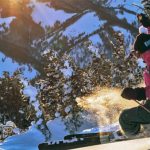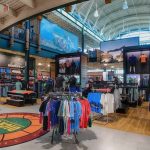BOSS: Now that youve held the ArcTeryx reins for two months, what are some of the challenges of the new position?
TJ: If anything, any surprises that came up were positive. Ive been with ArcTeryx for quite a while and have worked in nearly every area of the company, so I really know what is expected from every viewpoint. Any issues that came up were expected.
Looking forward, I think that my role is to come in and shake things up a bit. There are really no motivational or drive issues, in fact quite the opposite is true. There is a lot of pent up energy in this company right now. I just need to get the road blocks out of the way.
BOSS: Have you implemented any major changes? Will you be implementing any changes within the company?
TJ: We are not planning any major strategic changes. As we stand today, we have a very different strategy from our competitors. We invest more in R&D, we have a constantly evolving production facility right here in Vancouver, and we design from the ground up creating equipment that allows us to build the products we envision. Staying true to this product-driven philosophy lets us exploit our niche.
Within the company there will be some changes, some personnel changes. We have already made some of these changes.
BOSS: You are referring to the internal promotions you announced last month. What was the motivation behind that decision?
TJ: Like I said before, I am trying to get the roadblocks out of the way. We made those promotions in order to put people who were already key influencers into positions where they are now more effective. The end goal was to align each persons strengths with where they would have the maximum impact. When I looked around internally, I saw a lot of good people accomplishing good things, but I also saw that if they just shifted a little bit, they could accomplish great things.
I would also like to note that of those top five promotions, four of them were product related. About 70% of our manufacturing is done internally. We built our own manufacturing facility and we designed it to support the rapidly changing technology present in the outdoor industry. This gives us a real competitive edge over our competitors, who for the most part need to go out and find a different factory that can support these new processes every time they are developed.
BOSS: Youve had the opportunity to watch ArcTeryx grow from a relatively small Canadian climbing brand into a much larger apparel company that is a part of the second largest sports brand in the world. How has working with adidas-Salomon been?
TJ: The adidas-Salomon phase of our growth has been very interesting to watch from the inside, and I am sure it has been very interesting to watch from the outside perspective as well. When the deal was shaping up, we received assurances from Salomon that we would act as an independent company, and they have completely lived up to those assurances. The management was, and still is, born and bred ArcTeryx.
BOSS: How has joining adidas-Salomon helped ArcTeryx?
TJ: Joining the adidas-Salomon group has really helped us, mainly in access to experience. Most executives in the outdoor industry are self-taught. The experience available to us through adidas-Salomon really helps because they have been-there and done-that for nearly every situation distribution strategies, sourcing, geographic strategies its great to have that kind of resource to bounce ideas off of.
BOSS: What do you see as important for your company moving forward?
TJ: We are still a small company in the global picture, but as we have grown it becomes easier for the people on top to loose sight of the companys origins. I am a strong believer in the traditions behind Arcteryx and carrying those values forward. At the same time as the company grows it is easy for everyone to loose sight of the global picture. We work with a high level of decentralized power, so it becomes even more important for everyone to understand this global vision. So its my job now to make sure everyone understands not only what weve gotten right, but also what weve gotten wrong and learn from that.
BOSS: Salomon, adidas, and ArcTeryx are all targeting the outdoor market now, how are the brands separated?
TJ: Fundamentally there isnt that much overlap between the three brands in the outdoor market. However, adidas is positioned for the all-around athlete and the outdoor division caters more to the big-box customer who ventures into the outdoors. Salomon targets every sport, but is heavily involved in winter sports and multi-sport athletes. Arcteryx is, as you know, high end core outdoor.
BOSS: Have there been any discussions about – or precautions against – possible cannibalization?
TJ: Salomon has a very clear policy concerning cannibalization. Any time two divisions are working together or working in the same market, if either of the divisions could see a negative impact, they pull back. Even if one division breaks even and one benefits, they pull back. The only way the company will give the green-light is if it is a win-win situation.
BOSS: A few seasons ago, Arcteryx launched a casual apparel line in order to capture year-round shelf space. Has this been a successful strategy?
TJ: The short answer is yes. We went through a process of deciding if that was a direction in which we wanted to go, or needed to go as far as a seasonality prospect. We decided to be super honest with ourselves and look at the issue from a product perspective. We found that this was an area where we could contribute some real value making very technical sportswear that can be worn in the mountains or in the city. Five years ago our shelf space at retail would almost totally disappear in summer and pop back up again in winter. Today that is a different story.
BOSS: Whats in store for ArcTeryx next?
TJ: Well, we have many plans up our sleeves – some are in the late stages of development. Our focus remains on providing the absolute best products in every category we touch, and we will expand upon the lines we offer today providing more breadth to our offering. We decided that we are willing to explore any market where we feel we can contribute product, and this has brought up some very interesting discussions and some very interesting opportunities.
Basically, its not just about coming out with new products; its about producing a product that makes a difference in its category and I think you will see us in some very interesting categories in the near future.















